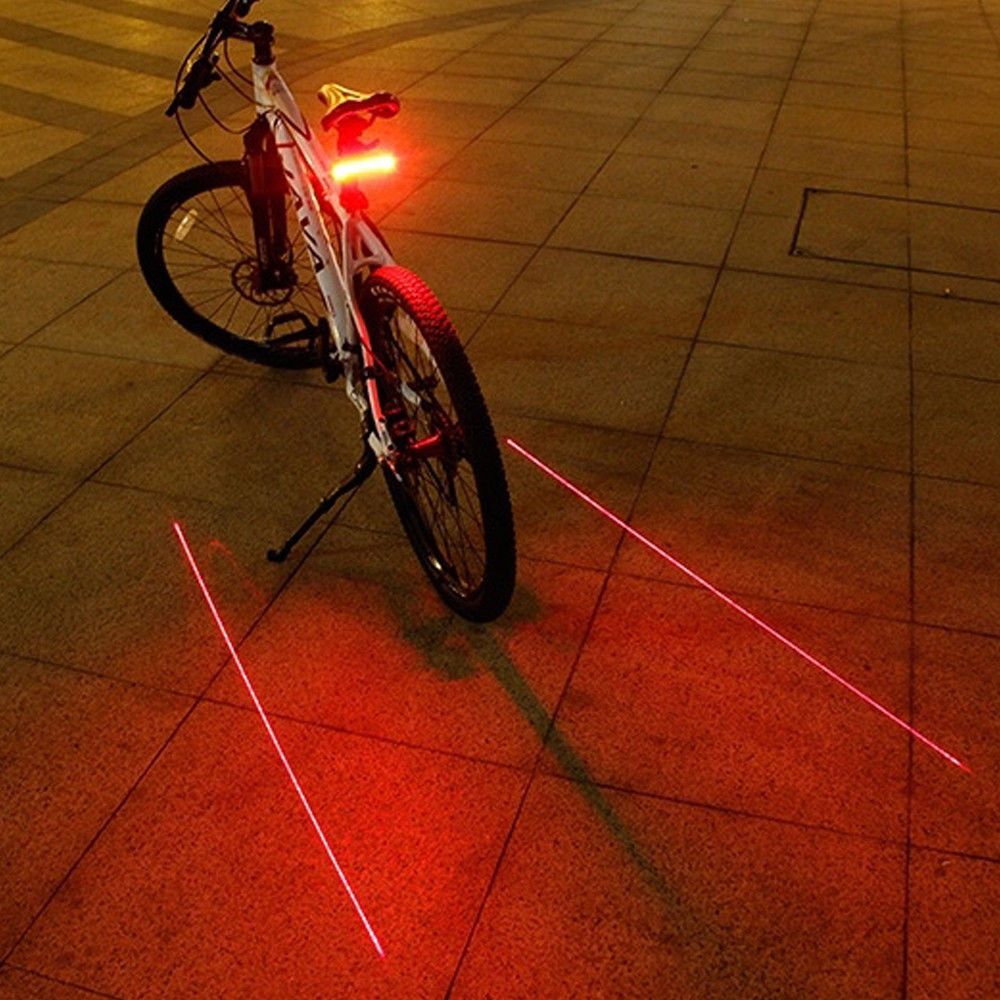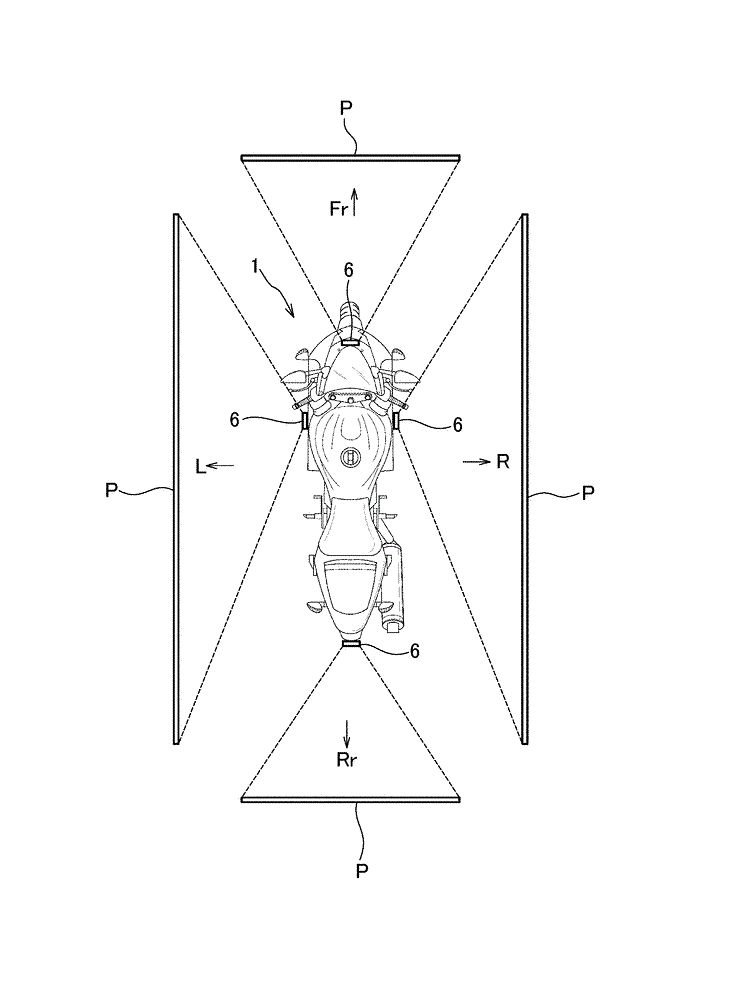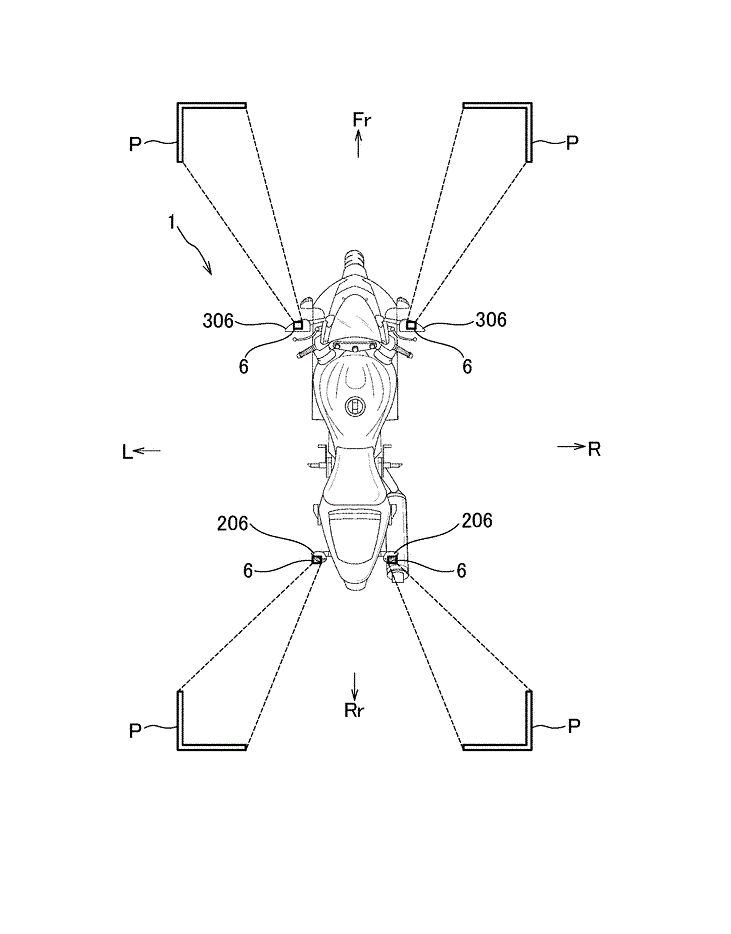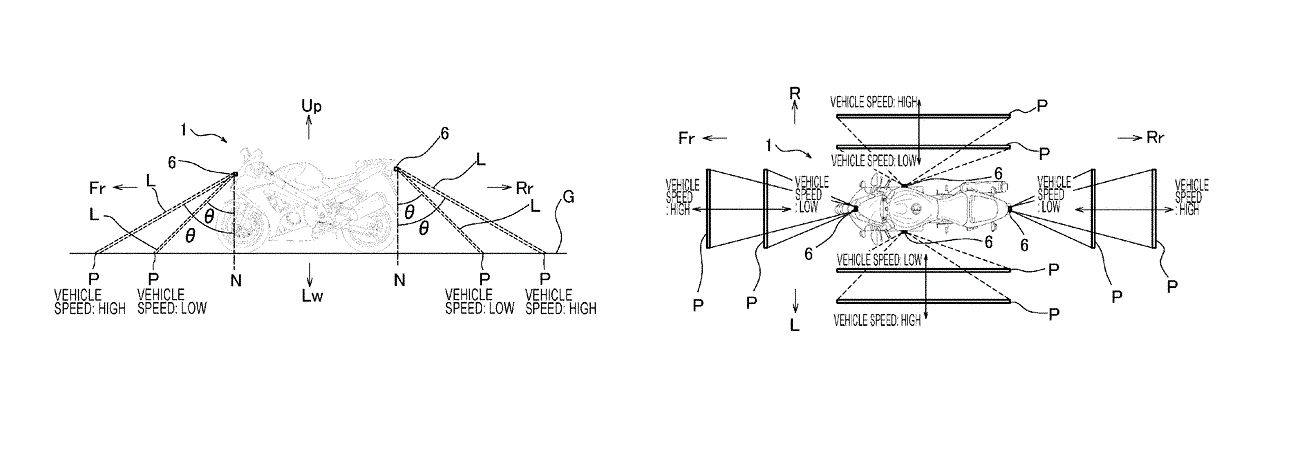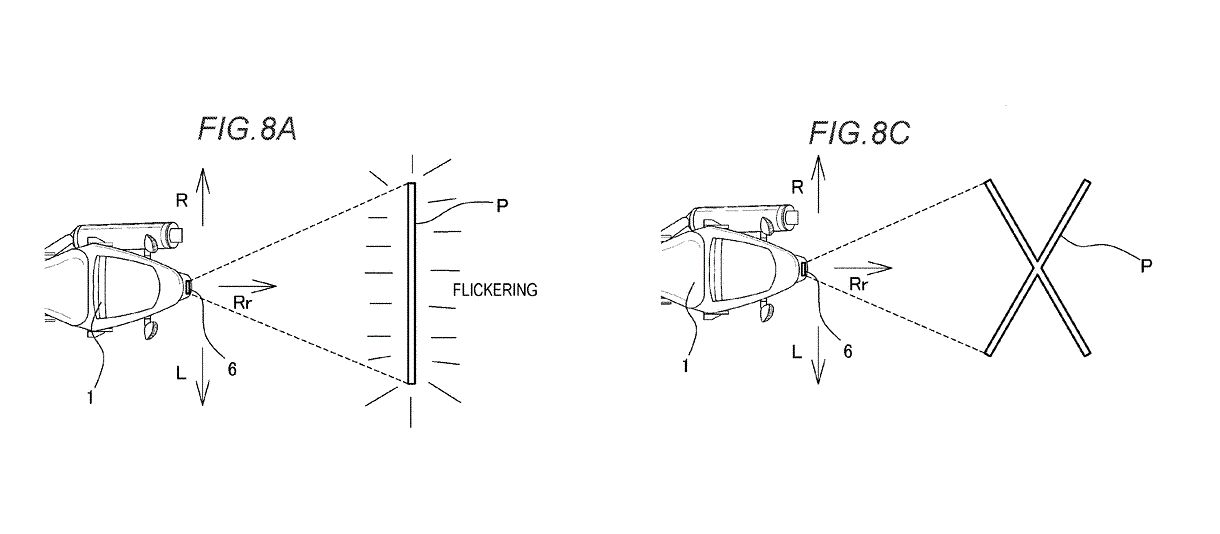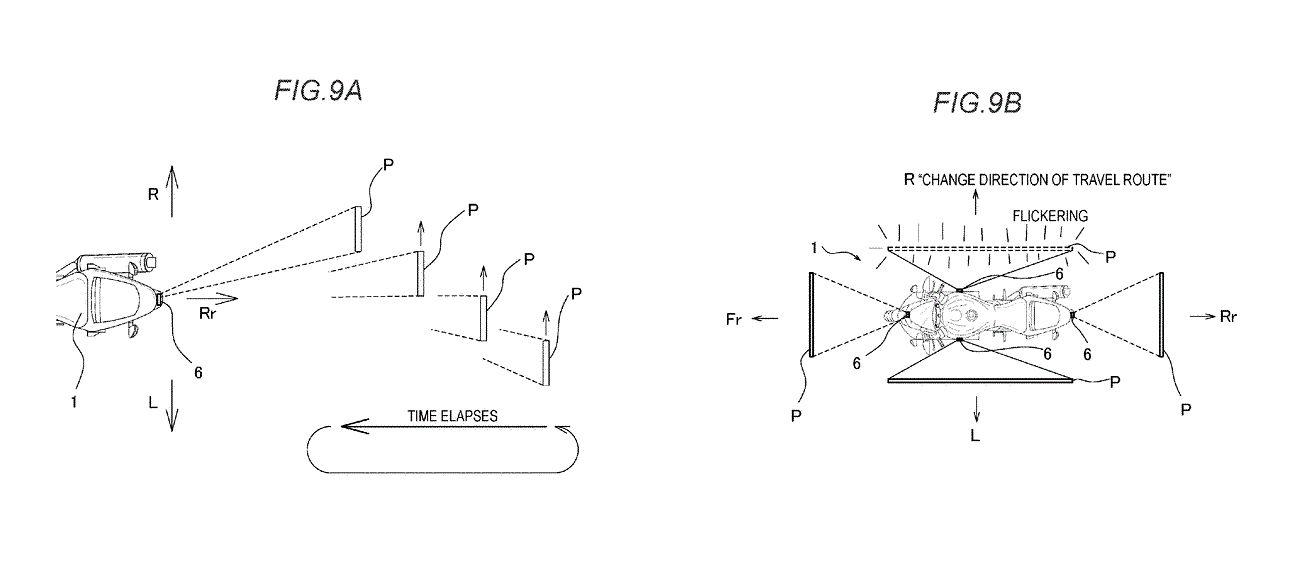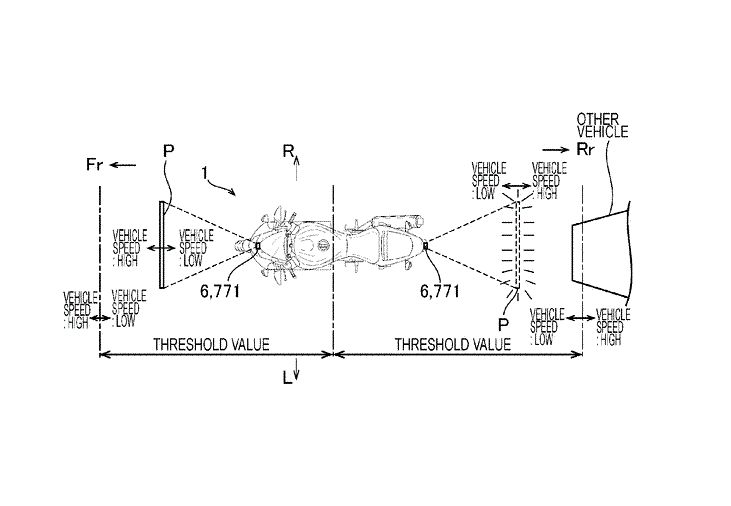In a bid to make motorcycling safe, manufacturers are foraying deep into embedding technology and innovation into their products to help riders stay safe on their bikes. Motorcycle accidents are close to 30 times more than those of cars, and Suzuki is in an effort to minimize that as much as possible.
The Japanese manufacturer has patented a complex laser lighting system to improve the active safety of motorcycles when in operation. According to the patent images, these dynamic laser lights surround the ground around the motorcycle helping other road users become aware of the motorcycle and rider intentions while on the move.
Although this technology of using laser markings on the road is not new, it has never been seen on a road-going production motorcycle until now. A number of aftermarket products are already available for bicycles and motorcycle beaming laser projections on the road that notifies other road users of the bike’s space.
But these products have limited use and functionality compared to Suzuki’s plan of dynamic projections. These projections embed with the bike’s sensors and take into considerations the speeds and distances of the bike with other vehicles. These lights also have the ability to change their spread and area of lighting that will suit the rider’s style and intent of operation.
For example, the lights are projected in the form of bright lights closer to the bike at low speeds, and as the motorcycle gains momentum, the projections also move further away notifying the vehicle behind the motorcycle to maintain a safe distance. The rider also can be helped to judge safe braking distance from a vehicle ahead of him at speeds.
The lights also configure themselves automatically based on the proximity of a nearby vehicle. To notify a vehicle approaching closer than what is deemed safe, the lights will start flashing like a strobe to alert the other vehicle to back off. When the motorcycle comes to a complete stop, the line projection changes to a large ‘X’. It basically gives the motorcycle and the rider an imaginary space around the vehicle and at the same time helps other vehicles to take note.
While maneuvering into a curve, the lights get their information fed via lean angle sensors to increase their distance further on the inside of the turn and shortens outside of the corner to give the rider more visibility and avoid glaring onto oncoming traffic.
Then there are another set of projections that work in tandem with the indicators. The dynamic projections project an orange hue on the ground and move in a semi-circle direction to show which way the bike is about to move. The projection that is already on the side of the bike also begins to pulse along with the indicators.
With such use of lights on the motorcycle, there's the question of whether the other road driver is looking at the road surface anyway. Research on driver eye fixation confirms the obvious that they give most of their attention to potential threats and signals, such as oncoming traffic, crossing traffic, traffic lights and road signs. Most of these are offside or high above the road, and only some of them are down on its surface. So their eyes are mostly up and rightwards.
All that said and done, there will be at the least a few drivers that will take note of these projected lights and will be made aware of an operating motorcycle on the road. And if this decreases accidents even by a little, I think it is worth implementing these systems.

